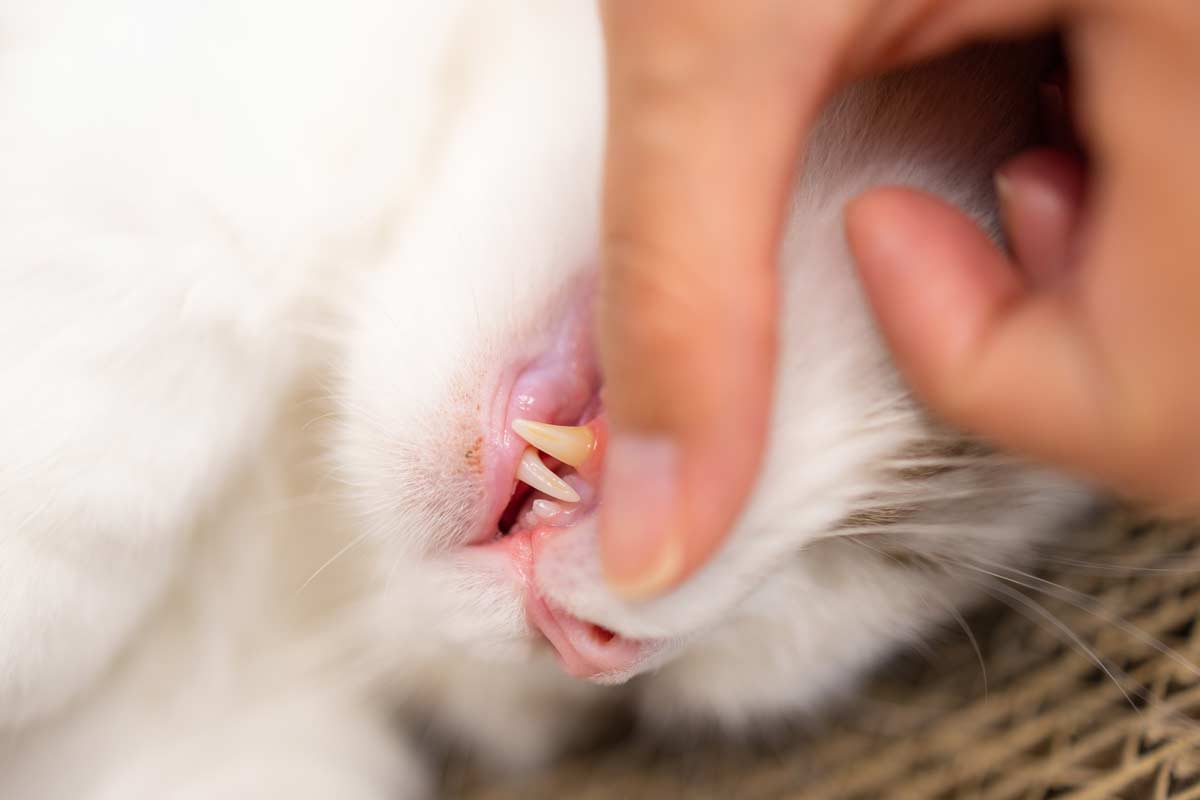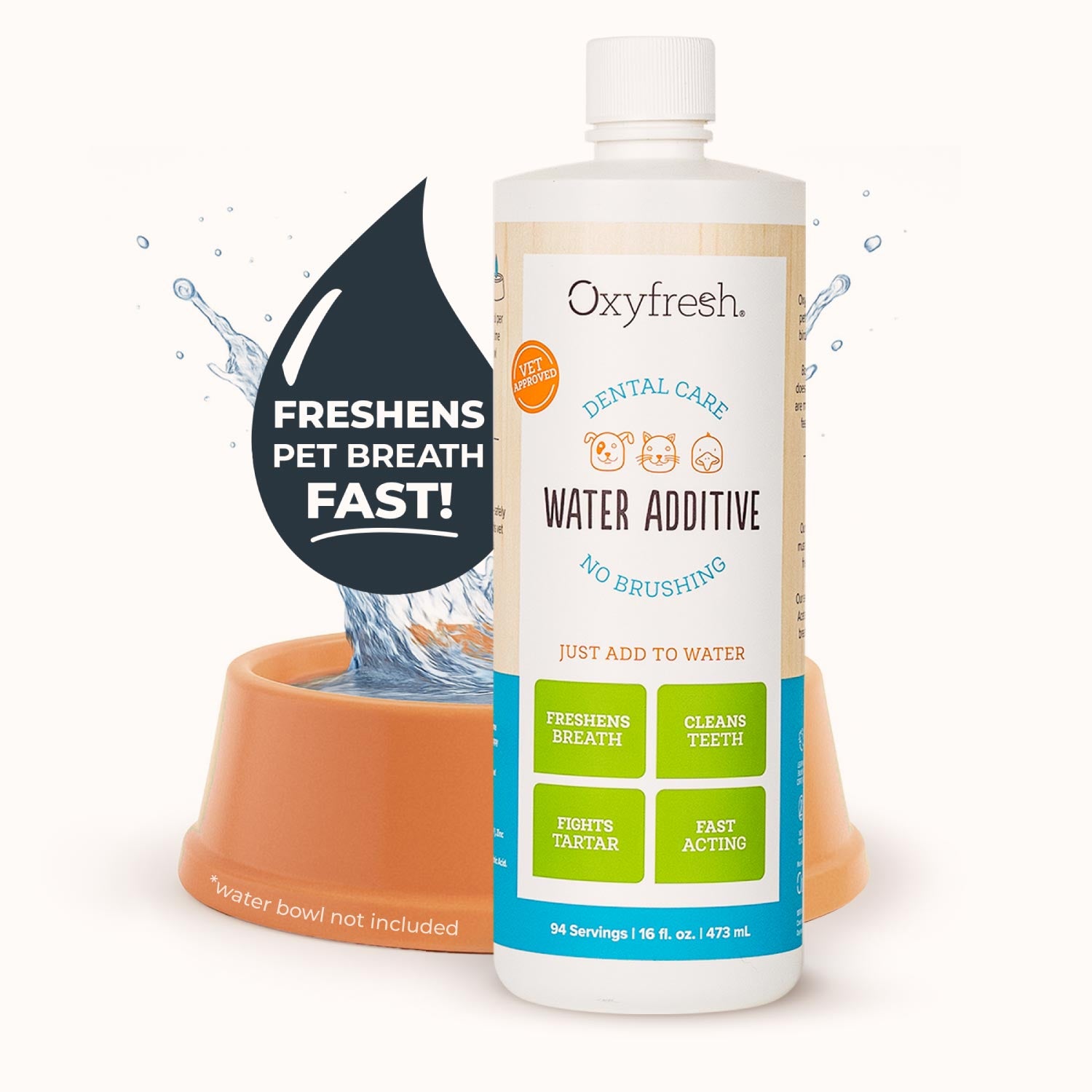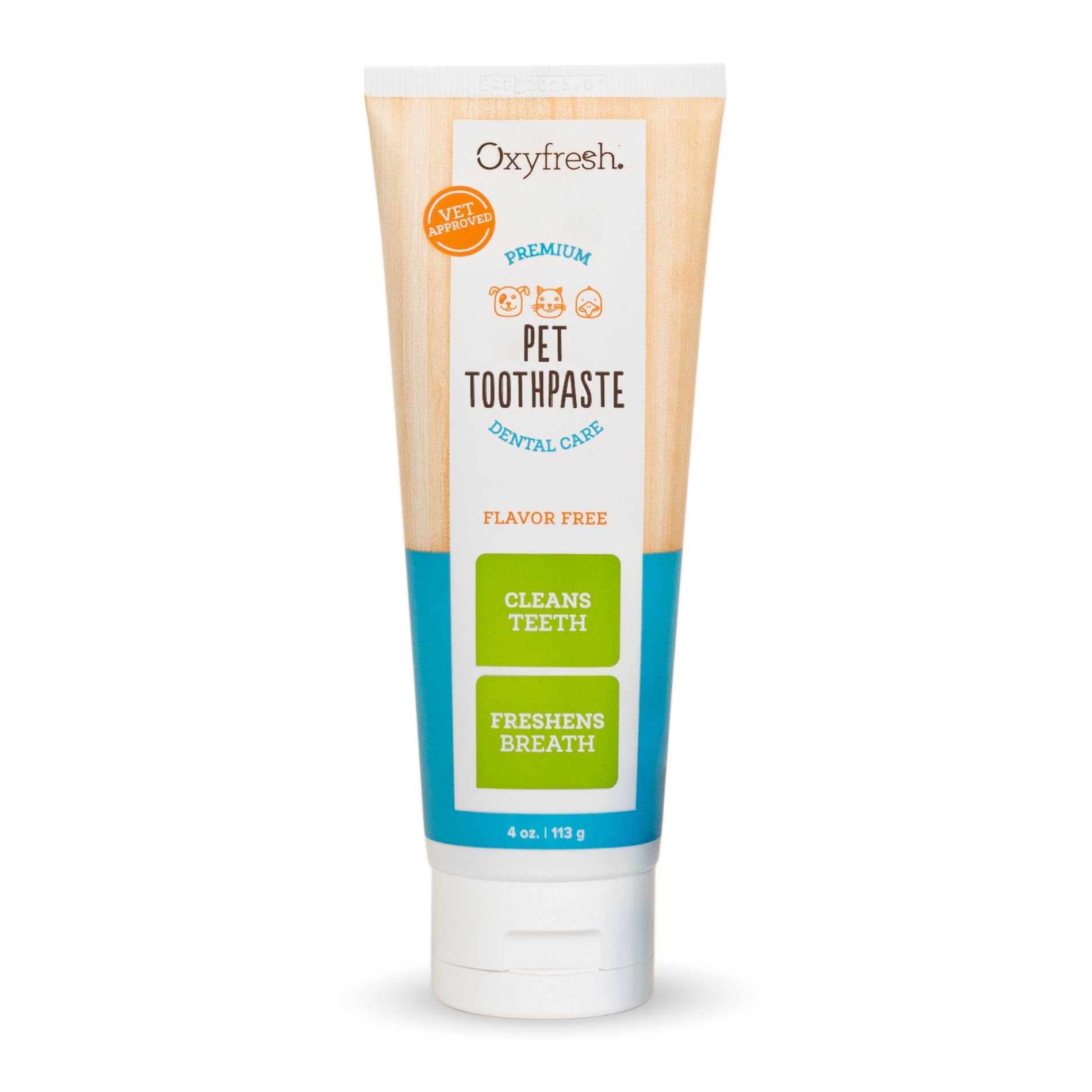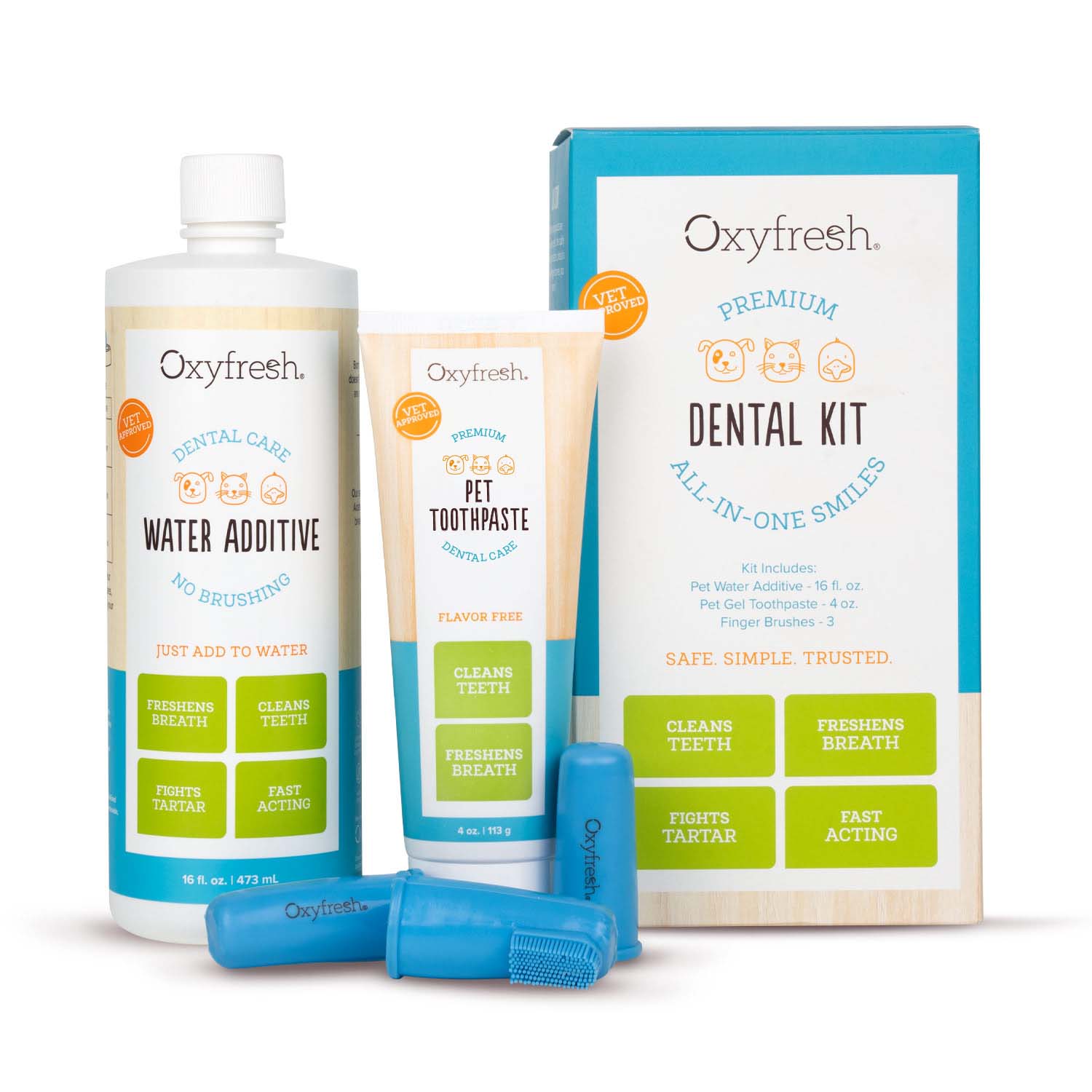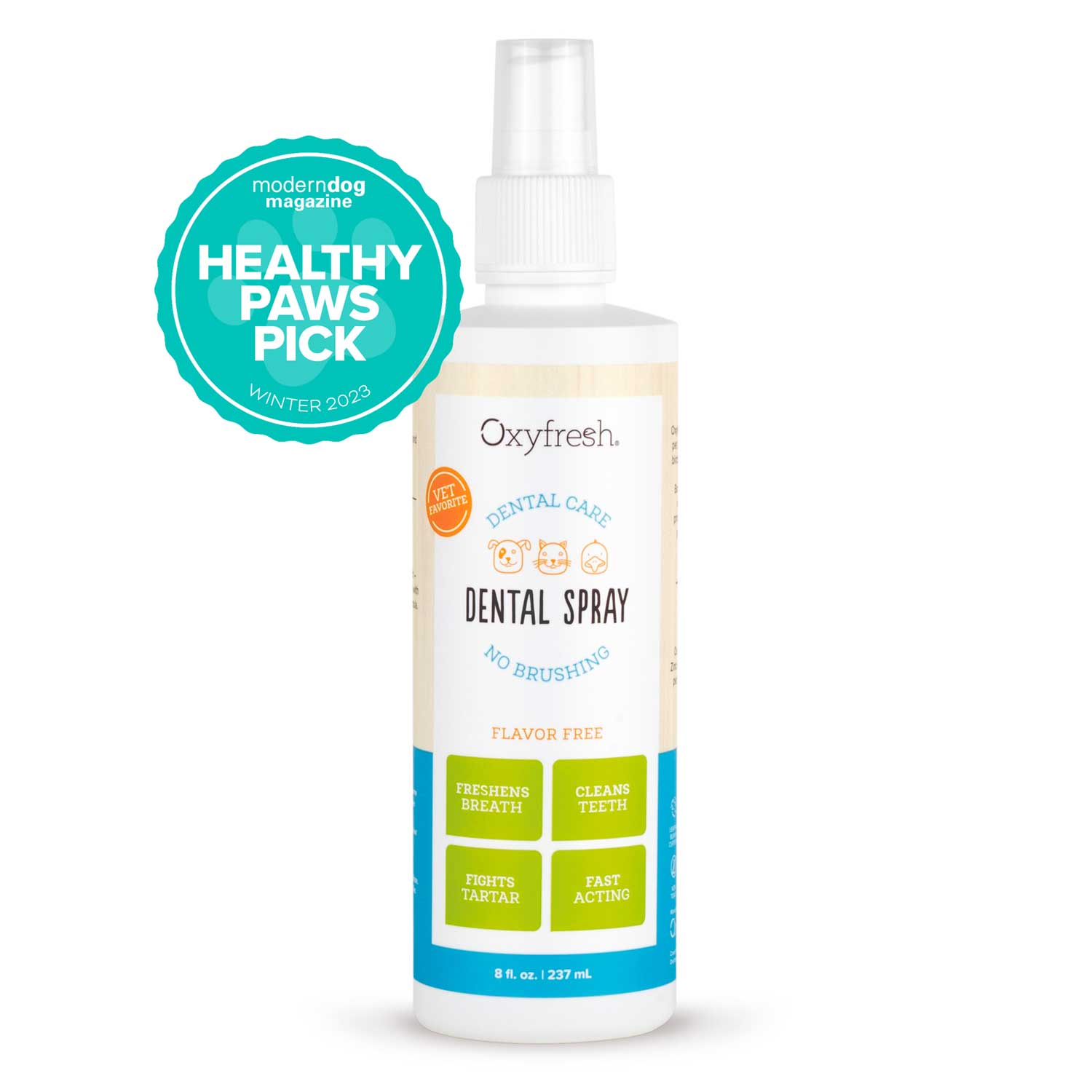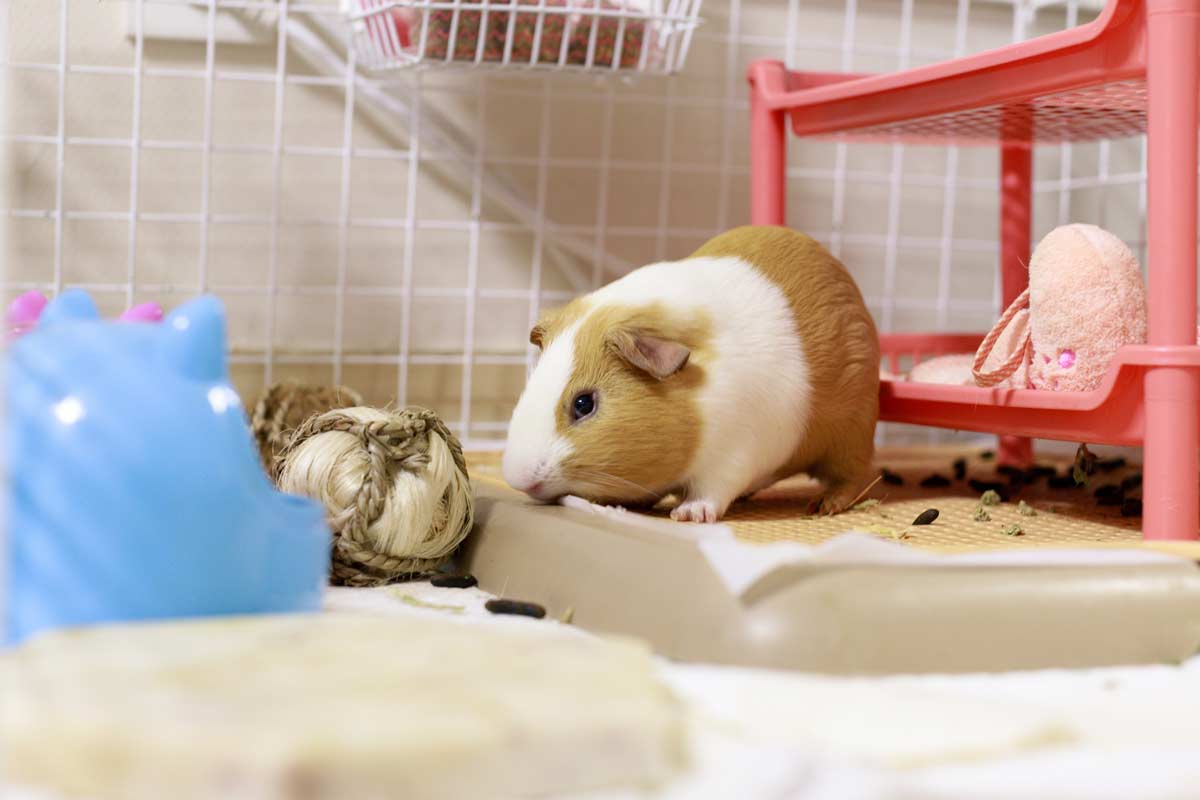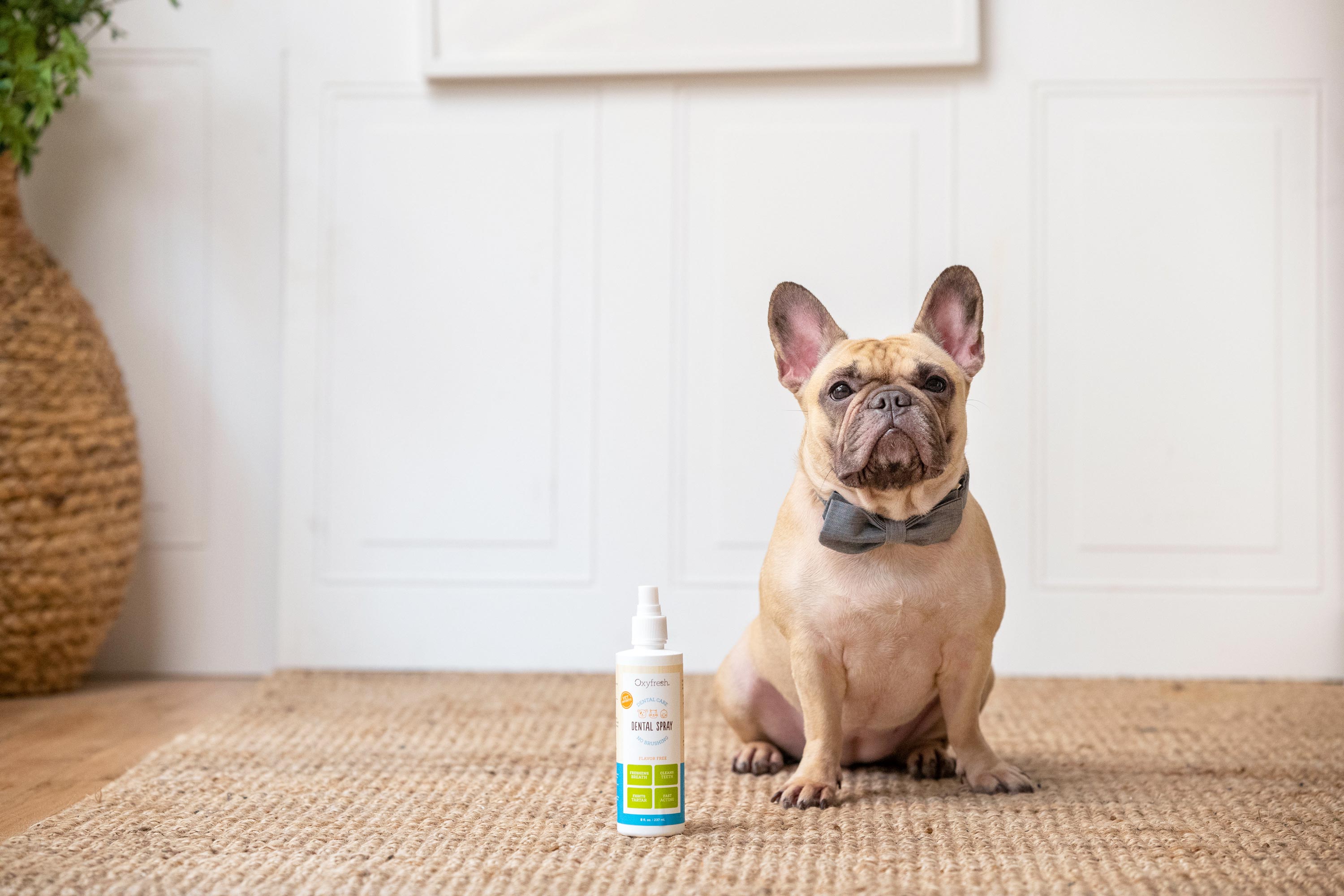If your cat’s purrly whites are turning yellow, don’t blame it on a secret coffee habit. While age and genetics play a small role in the color of a cat’s teeth, the main cause of yellow cat teeth is gum disease, which affects up to 90% of cats by the age of four.
Keep reading for what to do if your cat has yellow teeth, plus find out how to do cat teeth cleaning right at home!
Cat Teeth Cleaning = The Secret to Preventing Yellow Cat Teeth
Cats get yellow teeth when plaque, which is clear or creamy in color, gets left to build up on the teeth. All cats are susceptible to plaque, as it naturally forms after meals when bacteria in the cat’s mouth mixes with food and protein debris.
Plaque is a sticky, gummy substance that’s easily wiped, swiped, or brushed away, or combatted through a dental water additive. BUT ... when it’s left on the teeth, plaque can begin to harden into tartar (aka calculus) in a mere 24 hours!
Tartar is yellow to brown in color, and so rock-hard, that if your cat has an abundance of it, a professional dental cleaning using scaling tools under anesthesia will be necessary to scrape it away and give your cat a fresh start (quite literally, as tartar is very smelly).
The danger in ignoring cat teeth cleaning
If you ignore your cat’s yellow teeth (I love my furry friend just the way he is!), then you could be putting your cat’s overall health at risk.
Tartar buildup on cat’s teeth will become more severe the longer you let it go, as bacteria in tartar attracts MORE bacteria, creating a vicious cycle that causes irritation and infection of the gums (gum disease).
Bacteria from infected cat gums can spread throughout the cat’s body via the bloodstream, impacting the health of their heart and kidneys, ultimately taking 2-5 years off their lifespan. Not to mention, sore gums are not fun for cats! They're painful and can greatly impact their quality of life.
Signs of Gum Disease in Cats
Gum disease in cats is stealthy (like your cat creeping up on you), with many cat parents unaware of a problem until it’s progressed. That’s why it helps to know what to look for, and to keep your cat’s annual appointments, where the veterinarian will inspect your cat’s mouth.
- Fishy or pungent cat breath
- Yellow or brown buildup on cat’s teeth, especially near the gum line
- Red or swollen gums
- Only chewing on one side of the mouth
- Dropping food
- Loose teeth
- Excessive drooling
- Not wanting to be pet around the head
What do healthy cat gums look like?
Healthy cat gums will be bubble-gum pink in color. Not too light and not too dark. The teeth will be free of tartar. If you run your finger along your cat's gums, they should be moist and smooth. Keep in mind, some cats, particularly orange and black ones, may get black spots on their gums that look like freckles. This is pigmentation and nothing to worry about as long as the gums are not bumpy in texture.
Stages of Gum Disease in Cats
Cat gum disease occurs in four stages, and in the earliest stage (gingivitis), it’s completely reversible when you adopt a cat teeth cleaning routine. But as it advances, gum disease in cats gets more difficult to treat (and expensive), which is why an ounce of prevention is worth a pound of cash!
- Stage 1: Visible tartar on the teeth and/or red gums. Teeth and gums are still intact.
- Stage 2: Gums become red and swollen and crowns of the teeth start to weaken.
- Stage 3: Plaque and tartar are now under the gum line. This can cause the teeth to separate from the gums, which is very painful. A professional dental cleaning will be needed to clean under the gum line, and in these later stages, root canals and bone replacements may be recommended.
- Stage 4: Gums are now receding, exposing the roots of the teeth. Extractions (removing the teeth) will be necessary.
Adopting a Cat Teeth Cleaning Routine
Brushing is the gold standard when it comes to cat teeth cleaning and getting rid of yellow cat teeth. However, if you have a stubborn cat or a senior cat who may not take kindly to having their mouth touched, there are other cat teeth cleaning alternatives, the best one being a dental water additive. It’s completely hands-off but still does the job of fighting plaque. (Word to the wise: be sure it’s an unflavored water additive so that your cat continues to drink their water without issue.)
If you do want to try your hand at brushing your cat’s teeth, you need to start with a game plan. This is not the time to wing it!
Prep work to brush your cat's teeth
A week or two before you brush your cat’s teeth, you’ll want to let your cat get used to you touching their mouth. Hold them in your lap and dip your finger in some tuna or salmon juice or broth and rub it along their gum line while you calmly praise them. That way your cat won’t be alarmed when you put a brush in their mouth for the first time.
Speaking of brushes ... to set yourself up for cat toothbrushing success, we recommend using a finger brush versus a handled toothbrush. (As the name suggests, it slips on right over your finger.) These fit better in a cat’s mouth and are less invasive. They’ll also closely resemble your finger, so if you’ve done your prep work with the tuna juice or broth, this should be smooth sailing. You can find a finger brush in pet stores, the baby aisle at the grocery store, online, or even as part of a complete cat dental kit with cat toothpaste, a water additive, and finger brushes.
How to Brush Cat's Teeth
- Choose a time when your cat is relaxed.
- Gather your cat toothpaste (more on that below) and finger brush.
- Brush in a location where you can close the door so your cat can’t pull an escape job.
- Hold your cat in your lap, their head facing away from you. Keep your cat’s head steady with the palm of one hand while you brush with the other hand. (When you’re first starting out, it helps to have a partner!)
- Gently lift your cat’s lips and brush teeth along the gum line at a 45-degree angle, paying special attention to the molars. Don’t try to pry your cat’s mouth open. Simply focus on the outside tooth surfaces where plaque and tartar accumulate.
- Give your cat a treat afterward. This will build a positive association with brushing.
How often to brush cat's teeth?
To see the benefits of healthy cat gums and clean cat teeth, brushing your cat's teeth should be done, at a minimum, three times a week. In a purrfect world, teeth brushing would happen every day. If you're worried about dropping the ball on brushing your cat's teeth as often as needed, it's smart to supplement with a water additive that goes into your cat's water bowl daily. That way all your bases are covered for their daily oral care.
Choosing a Cat Toothpaste: What You Need to Know
The most important thing to remember is to not share your own toothpaste with your cat. Ingredients in human toothpaste like fluoride, sodium lauryl sulfate (a foaming agent), and mint can cause stomach upset, and xylitol can have toxic effects in cats.
But that doesn’t mean you should grab the first cat toothpaste you find. Avoid cat toothpastes with alcohol, which can sting tender gums and make the brushing experience less-than-pleasurable. Also steer clear of baking soda. Cats are not wild about the taste and because baking soda has a high alkaline content, it can cause stomach upset. (If you’re like us, you’ve cleaned up enough messes on the carpet.) To learn more, check out: how to choose a cat toothpaste.
What about flavored cat toothpastes?
As for flavors in cat toothpaste, this comes down to purrsonal preference (sorry). The concern is that many cats are picky and will turn their noses up at the cat toothpaste ... or bat you in the face. And besides, a mouth brushed with poultry or fish-flavored toothpaste simply doesn’t smell appealing. In addition to clean teeth and healthy cat gums, fresh breath is a must!
Best Toothpaste for Cats
Oxyfresh Pet Toothpaste is, paws-down, the best toothpaste for cats because it’s ultra-effective at stopping plaque and tartar buildup. It works like magic, but it’s really just great science! Only Oxyfresh Cat Toothpaste is formulated with Oxygene®, a proprietary, non-toxic oxidizer that neutralizes harmful bacteria on contact. It’s so powerful at stopping cat bad breath, no flavor coverups are needed! This makes the brushing experience better tolerated from the get-go.
Oxyfresh Pet Toothpaste ... Because No Self-Respecting Cat Wants Yellow Teeth
- Fresh cat breath in seconds
- Tasteless (like your cat’s humor)
- Healthy cat gums ... meow!
- Squeaky-clean teefers
- USA-made & vet recommended
- Don’t let yellow teeth put your cat’s smile in jeopardy. Adopt a cat teeth cleaning routine and say hello to healthy cat gums and a happier feline!
Don’t let yellow teeth put your cat’s smile in jeopardy. Adopt a cat teeth cleaning routine and say hello to healthy cat gums and a happier feline!

